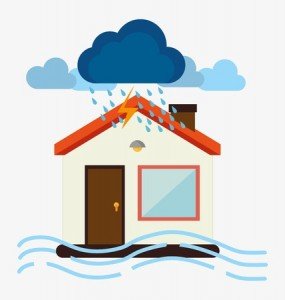El Nino: Insurers Warn Flood Coverage Isn’t Included in Most Homeowners Policies

Besides, flooding will never affect me.
Those are the two biggest myths when it comes to insurance coverage, and those in the emergency preparedness and insurance business are trying to raise awareness ahead of what’s been predicted as a strong El Niño winter storm season of rain and wind.
“Everyone lives in a flood zone — it’s just a question of whether you live in a low-, moderate- or high-risk area,” said Mary Simms, a spokeswoman for the Federal Emergency Management Agency (FEMA).
“Now is really the time for Californians to take steps to prepare for El Niño. One of the most powerful things property owners can do now is to buy flood insurance because you can’t purchase it at the last minute. It’s better to have it and not need it, than need it and not have it.”
Flood insurance isn’t included in most policies but can help protect homeowners, renters, condo owners/renters and commercial owners/renters, with a 30-day window between purchasing a policy and it going into effect.
Property owners have been able to financially protect themselves from flooding since 1968, when Congress created the National Flood Insurance Program.
According to FEMA, a flood is “a general and temporary condition where two or more acres of normally dry land or two or more properties are inundated by water or mudflow.”
The definition is broad because the way insurance companies interpret it is equally subjective, said Alexandra Sfaelos, an account manager and flood policy guru at HUB International Insurance Services Inc. in Santa Barbara.
She said flood insurance is a single-peril policy that covers buildings and the contents inside them, typically up to $250,000 for a residential structure and up to $100,000 for personal belongings with exceptions.
Some lenders require homeowners to pay for separate flood policies, Sfaelos said, but if the property isn’t in a high-risk zone near creeks, rivers or the ocean, most lenders don’t.
“If you want to get it, get it now,” she said. “It’s an awareness that more and more people have been coming on board with.”
HUB International brokers were filing between five to 10 flood policies a day last fall after FEMA changed the flood zone levels associated with several Santa Barbara neighborhoods.
More than 700 properties in the Mission Canyon and Mission Creek area were changed to high-risk flood zones from moderate, she said.
In the New Year, however, with January gone and still not a lot of rain, Sfaelos said the office has quieted down.
The average annual cost for flood insurance for a low- to moderate-risk property in California is $850, although it varies depending on risk level, FEMA reports.
FEMA estimated that between 2010 and 2014, the average residential flood claim nationally amounted to more than $39,000.
According to FEMA, the risk of flooding increases during El Niño season and after an area endures drought or wildfires.
One thing flood insurance doesn’t cover — among other areas — is mold or mildew damage property owners could’ve cleaned up more quickly, Sfaelos said.
“Don’t put the blinders on,” she said. “Act quickly if you have damage.”
Take tons of pictures after a flooding event, and it never hurts to plan ahead by stocking up on sandbags, plugging any leaky areas and cleaning out the gutters, HUB International account executive Stan Darrow advised.
“Sometimes the best insurance is preventative maintenance,” he said.
Source: noozhawk.com















 Accessibility
Accessibility